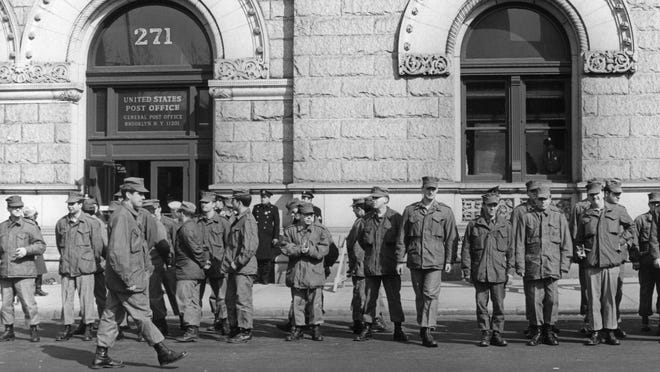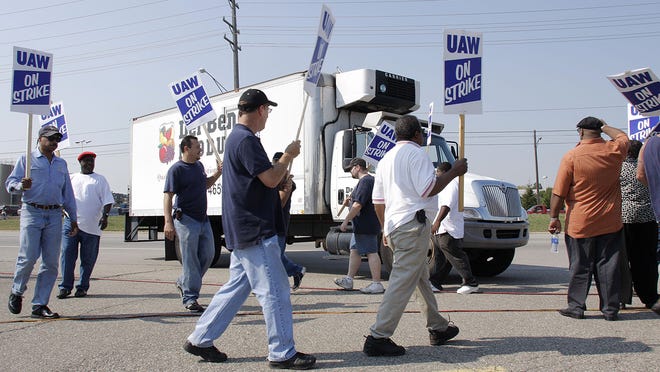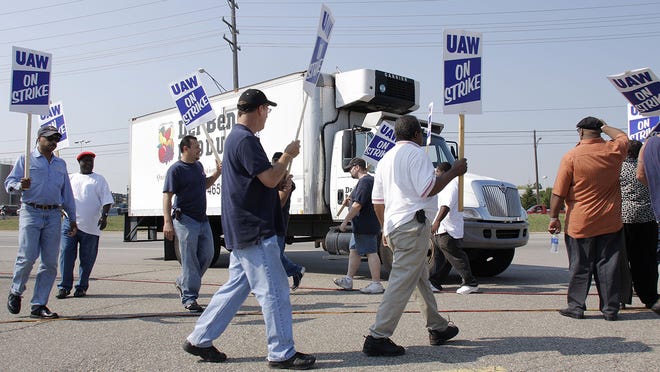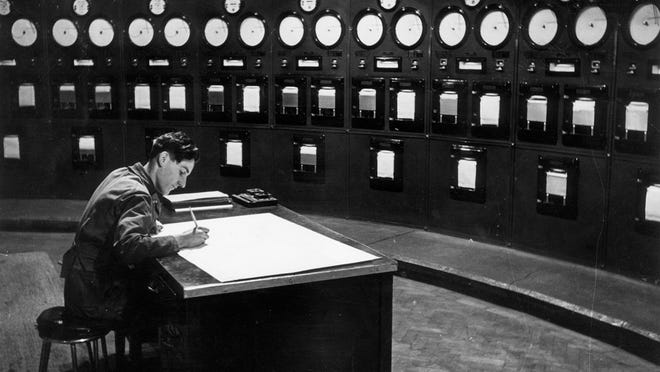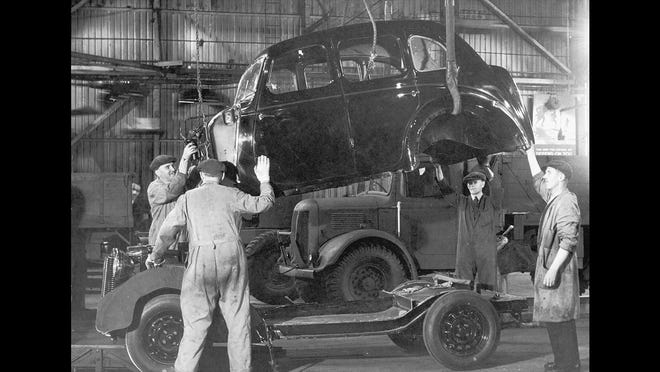1919
WAS THE YEAR OF GENERAL STRIKES
ACROSS THE WORLD
IN NORTH AMERICA THEY BEGAN WITH
SEATTLE
Seattle General
Strike - University of Washington
The Seattle
General Strike of February 1919 was the first twentieth century solidarity
strike in the United States to be proclaimed a “general strike.” It led off a
...
Seattle General
Strike: Video ... · Seattle General Strike: News ... · Map
Seattle General
Strike: Industrial Workers of The World
The Seattle
General Strike is an event very important in the history of the Pacific
Northwest. On February 6, 1919 Seattle workers became the first workers in ...
Setting the record
straight on the 1919 Seattle General Strike | The ...
https://www.seattletimes.com/.../setting-the-record-straight-on-the-1919-seattle-general-st...
Feb 6, 2019 - In
1919, Seattle's General Strike shut down the city for 6 days — but in the 100
years since, its stories have grown a little murky.
Why the Seattle
General Strike of 1919 should inspire a new .
theconversation.com/why-the-seattle-general-strike-of-1919-should-inspire-a-new-ge...
Feb 6, 2019 - It
was the Seattle General Strike of 1919, which began on Feb. 6 and lasted just
five days. By many measures, the strike was a failure. It didn't ...
Seattle General
Strike: Labor's Most Spectacular Revolt | Labor Notes
Feb 6, 2019 - On
February 6, 1919, Seattle's workers struck—all of them. In doing so they took
control of the city. The strike was in support of 35000 shipyard ...
Seattle's 1919
General Strike Ignited a Labor Movement - CityLab
https://www.citylab.com/life/2019/02/seattle-general-strike-1919-labor.../582424/
Feb 8, 2019 - The
Seattle General Strike paralyzed the city for six days. After 101 of 110 local
unions affiliated with the Central Labor Council voted for the ...
What the Seattle
General Strike can teach workers today | Opinion
Jan 30, 2019 - As
the 100th anniversary of the Seattle General Strike draws near at a time when
present-day activists, advocates, everyday workers and civic ...
Seattle: The 1919
General Strike | International Socialist Review
The United States
has one of the richest histories of class struggle in the world. One of the
best examples is the Seattle General Strike of 1919. Unfortunately for ...
Seattle General
Strike, 1919 - HistoryLink.org
Feb 4, 1999 - The
Seattle General Strike began at 10 a.m. on February 6, 1919, and paralyzed the
city for five days. Never before had the nation seen a labor ...
How the Seattle
General Strike of 1919 shut down the city
Jan 23, 2019 -
More than 65000 workers walked off the job for the Seattle General Strike of
1919. But many history students don't hear anything about it.
[PDF]The Seattle
General Strike of 1919 - America in Class
For six days in February
1919, the first “general strike” in American history paralyzed the port city of
Seattle, Washington. Two weeks earlier, the shipyard ...
Everything You
Need to Know About the General Strike that Shut ...
inthesetimes.com/working/.../1919_seattle_general_strike_anniversary_labor_unions
Feb 6, 2019 - On
February 6, 1919, the city of Seattle ground to a halt as 60,000 workers walked
off the job in a general strike that would last 6 days. Workers ...
Seattle, “the
Soviet of Washington” - Jacobin
Oct 3, 2018 -
Decades before Amazon dominated the city, Seattle was the fiery site of labor
unrest, radical action — and the US's only true general strike.
The Seattle
General Strike: Robert L Friedheim: Amazon.com: Books
The Seattle
General Strike [Robert L Friedheim] on Amazon.com. *FREE* shipping on
qualifying offers.
100 years after
Seattle 1919: Is the general strike making a comeback ...
https://www.peoplesworld.org/.../100-years-after-seattle-1919-is-the-general-strike-ma...
Feb 7, 2019 - A
new film, commemorating centennial of the Great Seattle General Strike of 1919,
plus a panel of experts in worker history and rights, tackled ...
1919: The Seattle
general strike - Libcom.org
Sep 10, 2006 - A
general strike of 100,000 workers, which saw the city shut down and all
essential services provided under workers' control. The First World ...
The Seattle
General Strike of 1919 | Department of History
Feb 6, 2019 - This
week marked the 100-year anniversary of the Seattle General Strike, a five-day
period that saw nearly half of the city's workforce walking ...
What was socialism
like during the Seattle General Strike? - Big Think
Feb 25, 2019 - In
February 1919, most of the various trade unions of Seattle voted to begin a
general strike. Ostensibly in support of striking longshoremen, the ...
Seattle General
Strike - Verso
Seattle_general_strike.
Seattle General Strike. The Forgotten History of Labor's Most Spectacular
Revolt. by Cal Winslow. Paperback; Ebook; Hardback.
OPINION: 1919
Seattle General Strike Exemplified Solidarity | South ...
https://southseattleemerald.com/.../opinion-1919-seattle-general-strike-exemplified-sol...
Feb 7, 2019 - by
Teresa Mosqueda and April Sims This week marks the 100-year anniversary of the
Seattle General Strike, a five-day solidarity work ...
The Seattle Worker
February 2019: Seattle General Strike Centennial ...
Feb 19, 2019 - The
Seattle local of the IWW presents a new issue of their publication, celebrating
the 100 year anniversary of the Seattle general strike.
What was socialism
like during the Seattle General Strike? - Big Think
Feb 25, 2019 - In
February 1919, most of the various trade unions of Seattle voted to begin a
general strike. Ostensibly in support of striking longshoremen, the ...
Seattle General
Strike - Verso
Seattle_general_strike.
Seattle General Strike. The Forgotten History of Labor's Most Spectacular
Revolt. by Cal Winslow. Paperback; Ebook; Hardback.
OPINION: 1919
Seattle General Strike Exemplified Solidarity | South ...
Feb 7, 2019 - by
Teresa Mosqueda and April Sims This week marks the 100-year anniversary of the
Seattle General Strike, a five-day solidarity work ...
Topic: Seattle
General Strike - History Day at Special Collections ...
Apr 12, 2019 -
History Day at Special Collections: Topic: Seattle General Strike. Special
Collections is a great resource for all your Pacific Northwest primary ...
Seattle workers
general strike for fair wages, 1919 | Global Nonviolent ...
The Seattle
General Strike was the first general strike in the U.S. and marked the
beginning of a post-WWI era of labor conflict. Conditions for a general strike
in ...
Seattle General
Strike, 1919: "Nothing moved but the tide" - Freedom ...
For six euphoric
days a century ago, Seattle's workers took over and ran the city. Industry
barons trembled. “All of Seattle was silenced as organized labor went ...
The Seattle
General Strike and the "Great Red Scare" | AHA
The first of these
is on the Seattle General Strike of 1919. We begin with an archive of editorial
cartoons at CUNY and two representative statements from public ...
When workers'
power ran Seattle | SocialistWorker.org
Feb 6, 2019 - ONE
HUNDRED years ago, workers in Seattle not only shut their city down with a
general strike, but they ran it for five days, from February 6-11 ...
Book Review: Labor
History: The Seattle General Strike - Vernon H ...
Book Review: Labor
History: The Seattle General Strike. Show all authors. Vernon H. Jensen ·
Vernon H. Jensen. Professor New York State School of Industrial ...
Seattle General
Strike | The American Historical Review | Oxford ...
by HG Gutman -
1965
Herbert G. Gutman;
The Seattle General Strike, The American Historical Review, Volume 71, Issue 1,
1 October 1965, Pages 334, ...
Sunday Video:
Seattle General Strike of 1919 | The Urbanist
Sep 3, 2017 -
Seattle made history in 1919 with the first general strike in American history.
The strike stemmed from the industrial boom of World War I during ...
Book Reviews : The
Seattle General Strike. By ROBERT L ...
Book Reviews : The
Seattle General Strike. By ROBERT L. FRIEDHEIM. (Seattle: University of
Washington Press, 1964.) Show all authors. John E. Crow.



